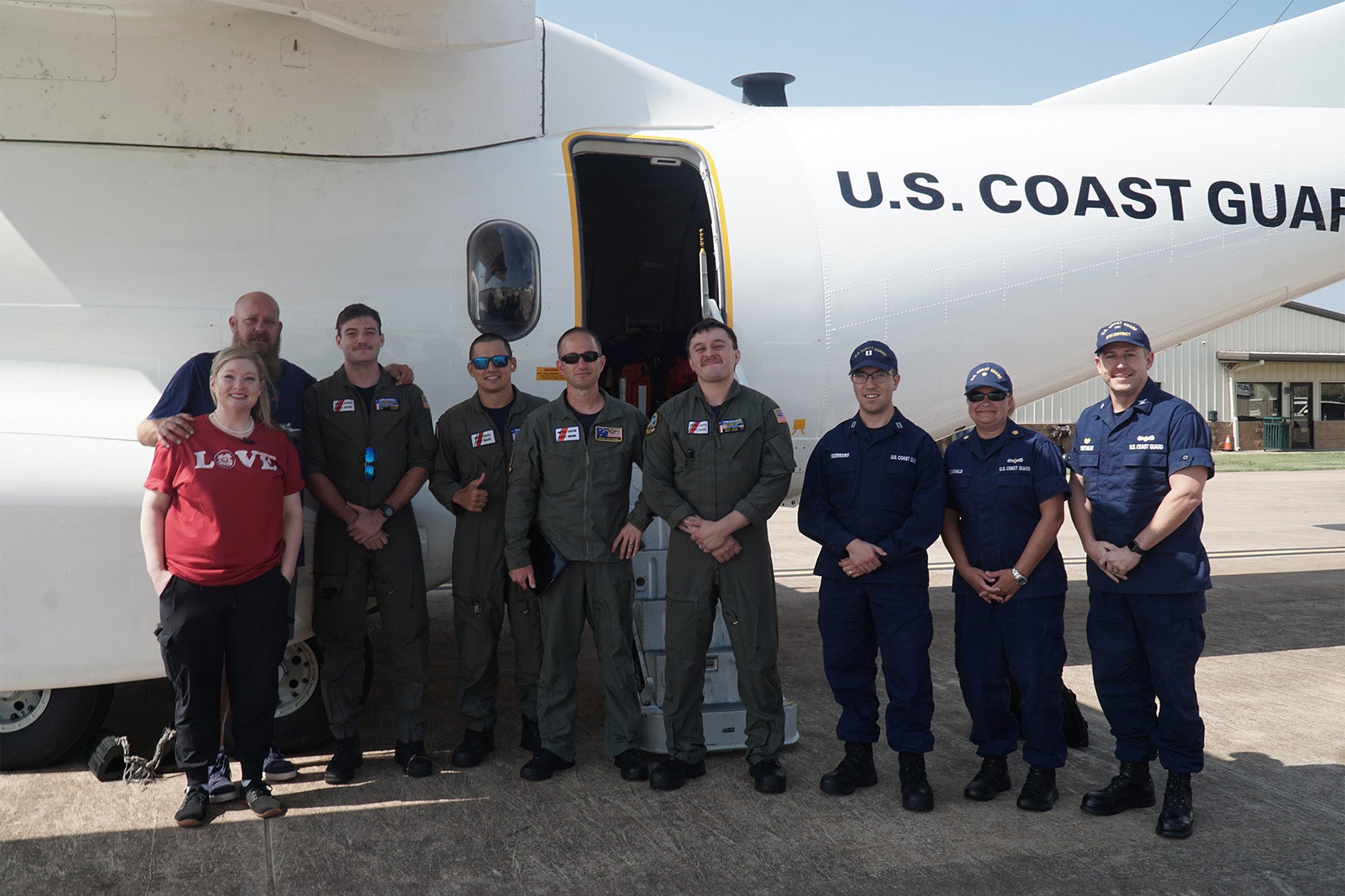On July 24, 2024, Nathan & Kim Maker, from Oklahoma, had been boat-diving with a group off the coast of Texas. As they were attempting to surface from their dive, they found themselves in the middle of a storm with a strong current. Another diver came off the down line and was being swept away. Nathan instinctively went after her and was able to get her back to the line, but he wasn't able to reach it himself. As Kim was reaching out to him, another diver inadvertently knocked her off the down line. They tried swimming but the current was too strong, so they tried dropping down below the current but it was still strong at depth. They decided to abandon the down line and surface about 100 yards behind the boat. They inflated their BCDs and SMBs and signaled for the dive boat to send a dingy. As they waited to be picked up in the heavy swell and pounding rain, they continued to drift further away.

The Makers managed to stay together as they were dragged out to sea. Nathan was able to use his crotch strap to tether onto Kim's SPG hose, which proved to be crucial as they quickly ran out of energy to hold on to each other.
Nathan's Shearwater Teric dive computer also proved to be a valuable life saving tool as they were seemingly hopelessly drifting into oblivion. "We were able to know how long we were on the surface and most importantly, the digital compass allowed us to navigate towards land," Nathan recalls. "When we went into the ocean for that dive, my computer had around 20% charge. Well long story short, the awesome Shearwater Teric lasted about 36 more hours! I also had two other (non Shearwater) computers with us but the batteries died a lot earlier."

Photo courtesy of US Coast Guard. The divers are finally spotted as they shine their lights at a passing aircraft.
As the hours turned into days, both divers became severely dehydrated, sunburnt, and sustained multiple jellyfish stings. The US Coast Guard was alerted to the incident that afternoon. They dispatched two helicopters, a fixed-wing aircraft, and two boats as an emergency response from various stations across the Texas coast. They searched for over 36 hours and covered a search area of around 4300sq km. With no luck, they were about to call off the search until the crew of an Ocean Sentry aircraft was making their last run outside of the search grid, spotted two lights.
The divers were directing their torches at the plane, allowing the crew to relay their position, which was about 25 km off the coast at Matagorda, to a Coast Guard cutter who located them for the rescue. Nathan, a diabetic, was on the verge of a coma when recovered, and Kim had sustained an infection. However, both divers were in stable condition when they were picked up and taken to hospital. They have since made full recoveries and have already got back in the water to continue their passion for diving.
Nathan reflected on their ordeal and spoke about getting back in the water, "As anyone who dives knows, as soon as you go under the water, all the stress of daily life just seems to fade away and you just get to relax. We both knew we needed to get back in the water as soon as possible after being lost at sea. Before the first dive, we were both very anxious but excited to get back into it. As soon as we splashed and went under, all the nervousness went away and we had great dives. So glad we got back in as quickly as we did."






